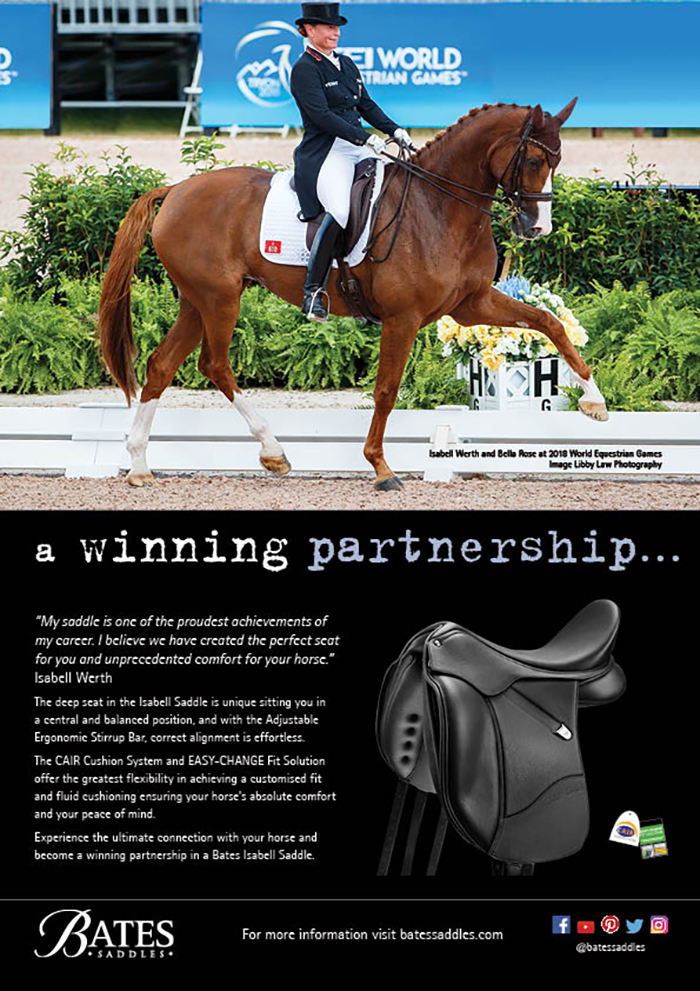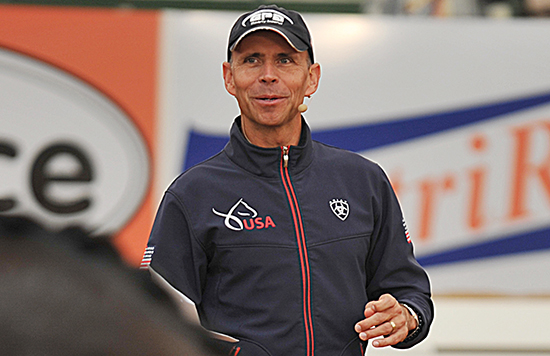 Story – Chris Hector & Photos – Roz Neave and Travis Cole
Story – Chris Hector & Photos – Roz Neave and Travis Cole
I was wondering just how Steffen Peters would go as an Equitana super Masterclass star… when I saw him operate in Sydney a few years back, I was impressed by how quiet the guy was. He was using a mike and head-sets to communicate with his riders, and I had to sit right next to him to catch his words.
But of course when you are dealing with someone as intelligent and competent as Steffen, there is no need to worry. He is obviously an old hand at this dressage-lesson-as-a-public-spectacular caper, and communicated brilliantly with those in crowd who had come to listen, which did not include a sizeable number who wandered off when they realised that Steffen might live in the United States but he does not wear a big hat, nor have a simple solution to every problem. He does have however an extraordinarily subtle and complex way of dealing with the issues that confront every serious rider.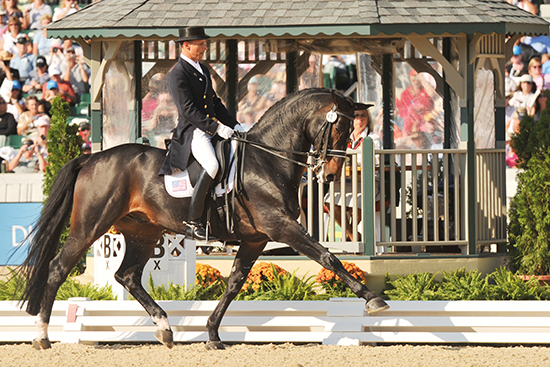
This year, the selection of horses and riders was excellent, and the three young horses for the first session were superb creatures and presented the clinician with a canvas large enough to showcase his brilliance.
Maree Tomkinson was riding a five year old imported mare, Debstar (by World Young Dressage Horse Champion, DiMaggio). Ree explained that the mare had been imported in foal and was only now in work and was right at the beginning of her competition career. Shannon McKimmie was riding Ambassi, a five year old gelding by Sandro Hit, while Nicole Tough rode the six year old, Flavio, by Florestan.
Steffen showed an unerring ability to hone in on the trouble spots. After watching Debstar, he identified the problem area: contact.
“This mare has nice gaits, I am a little more concerned about contact, that she is a tiny bit against the bridle. It is important to explain to horses how much contact we accept, and how much they accept. When she cruises around, we have to stay very picky about the connection.”
“In the trot, just focus on connection, create a suppleness, ask for some flexion, it is about accepting contact in a nice way.”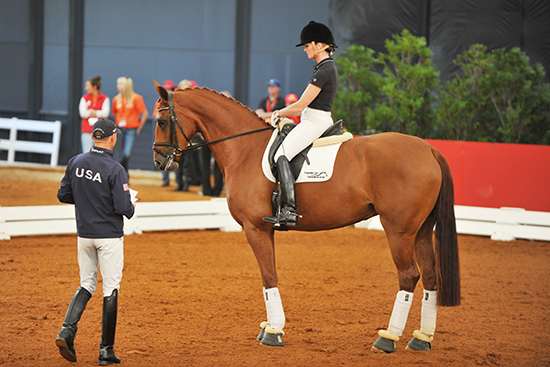
Steffen noticed that Maree was riding without a whip and a helper was sent to get her one, but this was whip use with a difference: “I am very picky about the use of the whip. It is not to send the horse forward, not to punish the horse, it is to get the horse’s attention. If she is not responding to the half halt, give her a little touch. We need to create more awareness of the aids.”
“When you bring her back, another little tap, we have to create lightness, self carriage, acceptance of the aid. Horses trick us into accepting too much contact. I’d like to see a more obvious half halt – followed by a giving. She is too straight in the neck, while working on the half halts, address suppleness. Bend her a little to the inside, to the outside. Use the whip very gently when you come back so the transition becomes more clear to her – truly releasing after the horse gives a true answer. We want the horse to truly engage the hindlegs, but first what do we have to engage? The horse’s brain.”
“When you came in, she was a little asleep on you, too much in hand. If there are too many times when you use a half halt and the horse doesn’t change, that causes trouble. I appreciate the new judging direction, that the judges want expression, but they also want harmony.”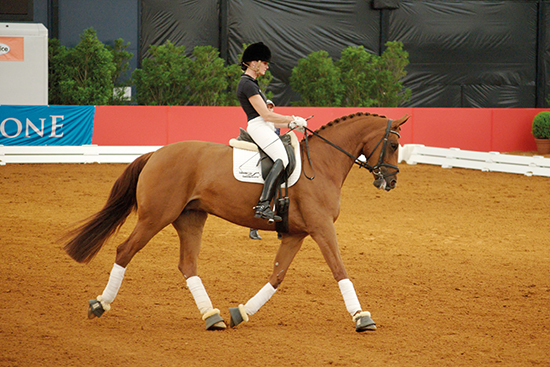
And Steffen is a stickler for rider position: “Don’t lean back. It is okay for a moment, but just for a moment…”
“Okay, let’s finish with a few transitions in canter…”
But this is not okay, the mare’s first move in the canter transition is to go against the contact:
“No. Engage her mind, it is up to you to make her rounder, not up to her. You are accepting too much contact, with her the contact is a downhill tendency, it must be an uphill tendency.”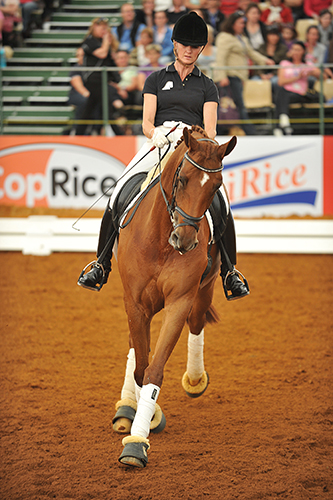
Once again, Steffen wanted Maree to use the whip in a very creative way:
“Forward, now collect, a tap with the whip – now you are creating adjustability, broadening her horizons. Now try a walk transition…”
And it comes up fine, and Steffen is delighted:
“This was proof in 15 minutes there has been a huge difference in self carriage. In future you must work on an obvious half halt and a true response. Now is the time in her development to establish lightness, self carriage and adjustability.”
More follows
With the next horse, Shannon’s Ambassi, Steffen tackled front-on the issue of deep and low, and quickly made it clear that he is no fan of automatically putting the horse deep:
“This is a nice soft horse. It is important to let horses stretch when necessary, but don’t start every day long and low, only do it when necessary. I adjust the work to what the horse tells me. What I am trying to do is engage his mind, not breeze around on a loose rein, that is just teaching the horse to be disrespectful.”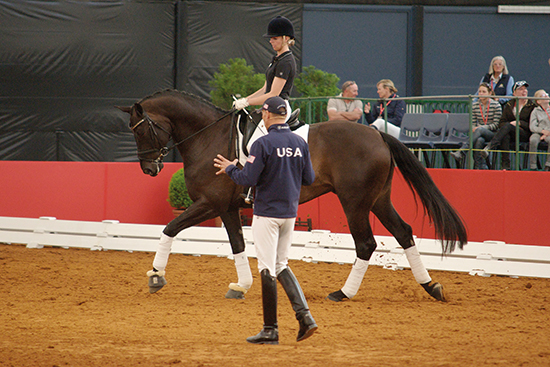 At this point the horse has a little freak out and wants to head for the gate:
At this point the horse has a little freak out and wants to head for the gate:
“Turn the horse. When a horse jacks up, be positive. When you feel he wants to go to the gate, flex, but in counter flex.” Later in the session, when he came to ride Shiraz Black, Steffen gave us the post-graduate course in dealing with horses that wish to go somewhere else…
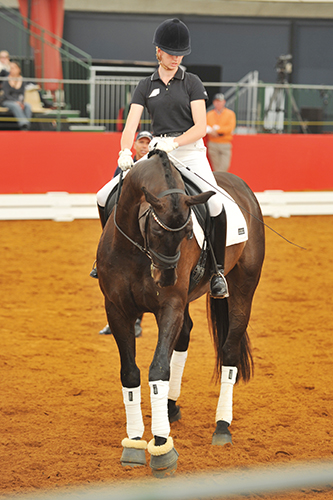 Steffen does not tolerate kicking at the horse, and he brought the mike maestro, Roger Fitzhardinge into the arena, and tapped his back. “See Roger looks at me, I’ve got his attention but he has absolutely no idea what I want him to do – it’s the same when you kick the horse. Instead of a little kick, follow through with the driving aid. Close your leg for one second instead of a tenth of a second, and really get a forward reaction. It is so important to get a true reaction to your driving aid.”
Steffen does not tolerate kicking at the horse, and he brought the mike maestro, Roger Fitzhardinge into the arena, and tapped his back. “See Roger looks at me, I’ve got his attention but he has absolutely no idea what I want him to do – it’s the same when you kick the horse. Instead of a little kick, follow through with the driving aid. Close your leg for one second instead of a tenth of a second, and really get a forward reaction. It is so important to get a true reaction to your driving aid.”
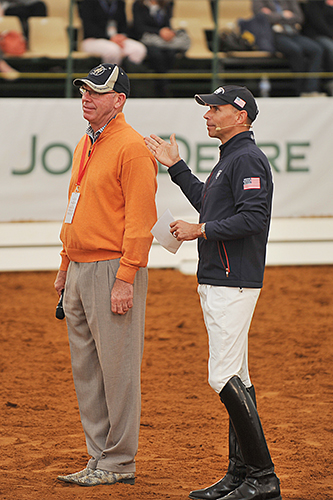 “Right now you are supporting him every step – refuse to give the aid too repetitively. Don’t kick, the calf is the driving aid, and the spur is the emergency aid. With young horses it is so important to get the correct response from the leg to the rein. Horses have choices, they can use their muscles against the rider, or they can use their muscles to carry themselves.”
“Right now you are supporting him every step – refuse to give the aid too repetitively. Don’t kick, the calf is the driving aid, and the spur is the emergency aid. With young horses it is so important to get the correct response from the leg to the rein. Horses have choices, they can use their muscles against the rider, or they can use their muscles to carry themselves.”
“We have to ride creatively every day, it is easy to fall into the trap of just repeating movements, we have to get away from that. If you feel you are weight lifting, stay away from that. It should be like dancing, light and uncomplicated. The spur can’t be used to maintain a gait or to maintain collection. Use a minimal aid – never use the spur for more than two or three strides, use the spur to send the horse forward, not just numbing our horses. The use of the spur is intended to make the rest of the leg aids more refined. Don’t bug the horse with the spur, it has got to make a difference when you use it. You can make your horse sensitive to your knee, to your thigh, then people can’t see the aid.”
 “You are a good enough rider to say, I’m going to make a difference every day. Say to yourself, I’ve still got a lot to learn, but I’ll teach him every day…”
“You are a good enough rider to say, I’m going to make a difference every day. Say to yourself, I’ve still got a lot to learn, but I’ll teach him every day…”
“Ask yourself the question, is the horse in front of my leg? Wake him up, don’t let me say it to you, you are the trainer, raise your standards. Train, don’t just ride the movements. Give your horse a chance to enjoy every day.”
With Nicole Tough and her lovely Florestan, Flavio, Steffen had the chance to re-emphasise the major theme of his clinic – contact.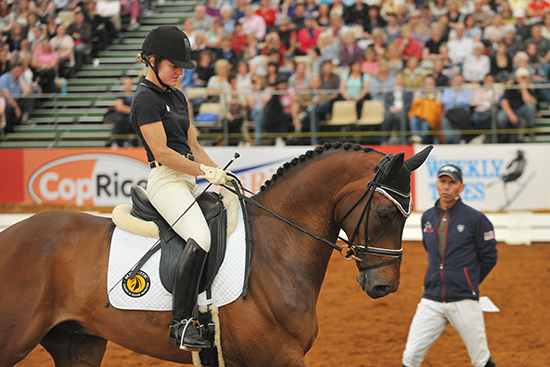
“Your horse has three good gaits, but be picky about connection. The priority of contact is the suppleness of the contact. You can push to the hand if your horse has an understanding of suppleness. Now the horse is going nicely forward, swinging, ask, how about the contact? How about the response to the leg? Every day, think: energy, suppleness, self carriage. Give him things to figure out, give him things to learn. I love the way he moves, but think about the understanding of suppleness on his part. The physical part might be established, but the brain is just not there. It doesn’t work for me – inner leg to outside hand – if you just focus on that, the horse gets stiffer
and stiffer.”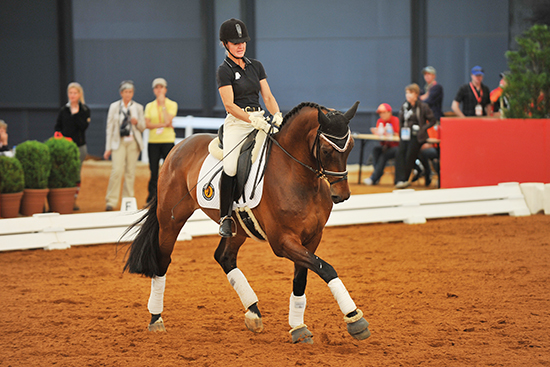
“Create reasons why your horse let’s go. You took the rein, he gave 50% and you let go. Ask and get a true release, then you give a true release. Your horse is balanced enough, don’t be afraid to make him understand suppleness. If you don’t ask for suppleness, the horse doesn’t offer suppleness. Don’t let him learn to use muscles against you. Release and praise, he wants to play.”
“How was that transition? He rested in the transition – he can rest after the transition. Now he can walk off, but when you walk, slowly give the rein, don’t let him rip the rein from you, he must take it respectfully and you allow him to
take it.”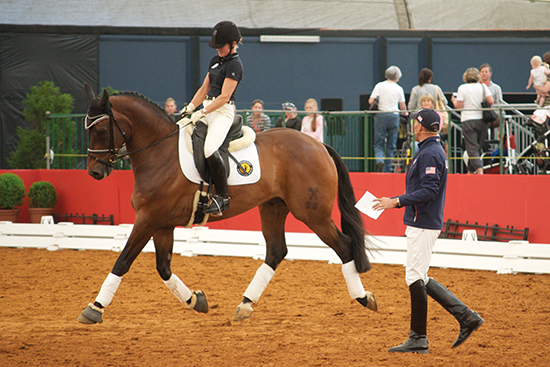
“This is a horse with international potential, and as a trainer, you have a huge responsibility to ride him like you did today…”
In part two, Steffen works with two medium advanced horses – Jayden Brown and Fürst Friedrich and Justine Greer and Yarra Valley Rodrigo, as well as Jenny Gherke and her Prix St Georges horse, Gitane…
This article first appeared in the January 2011 issue of THM.
Want more articles about Steffen? Go to his Who’s Who for a full directory:

